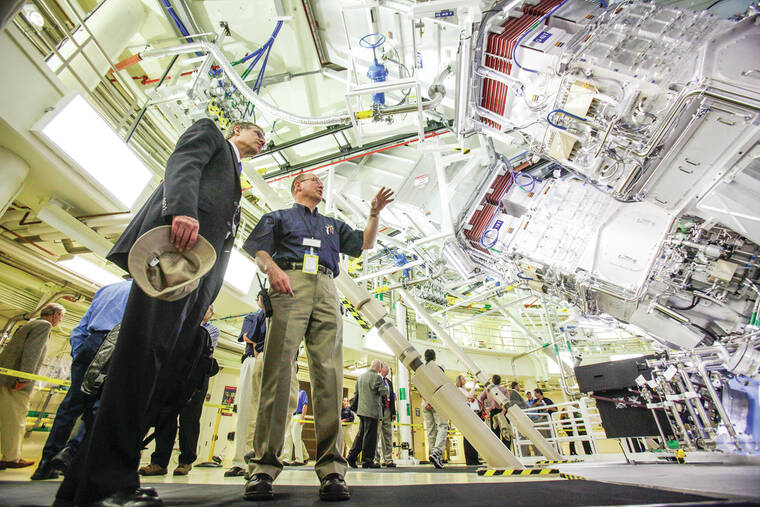Scientists achieve a laser fusion breakthrough
In July, scientists at the National Ignition Facility at Lawrence Livermore National Laboratory in California generated a burst of energy by bombarding a pellet of hydrogen with 192 lasers, reproducing for a brief moment the process of fusion that powers the sun. It was a repeat of an experiment last December, but this time the scientists generated even more energy with nearly a factor of two in gain compared with the energy of the incoming lasers.
“We again repeated ignition,” Richard Town, the associate program director of the laser fusion program at Livermore, said in an interview. He gave a talk about the July experiment Monday at a conference in Denver.
ADVERTISING
The Livermore results raise hopes that fusion can one day be used to generate bountiful amounts of electricity without producing greenhouse gases or long-lived radioactive waste.
•••
THE KEY NUMBER: 3.88 MEGAJOULES
The experiment in December generated a whirlwind of accolades when it produced about three megajoules of energy — equivalent to about 1.5 pounds of TNT, or about 1.5 times the energy of the incoming lasers. It was the first time that a fusion reaction in a laboratory setting produced more energy than it took to start the reaction.
The July experiment was essentially identical to the December one. “We expected a similar yield,” Town said. “On the order of three megajoules.”
The actual output was 3.88 megajoules.
The better-than-predicted result indicates that with a few tweaks, laser fusion can become markedly more efficient. But minuscule variations could yield fusion duds as well.
•••
WHAT HAPPENS NEXT: UPGRADING AND OPTIMIZING THE EXPERIMENT
Siegfried Glenzer, a scientist at the SLAC National Accelerator Laboratory in Menlo Park, California, who led the initial fusion experiments at the Livermore facility years ago, said of the July advance, “The fact that the gain has gone up on the last shot is encouraging news and shows that the current implosions are not yet fully optimized.”
A new series of experiments is about to begin at the National Ignition Facility as it aims to generate higher fusion yields more consistently. The energy of the facility’s lasers is being upgraded to 2.2 megajoules from 2.05. The latest advances occurred after the last upgrade from 1.9 megajoules. Additional energy is expected to lead to further improvements.
“If you can couple effectively more energy to the hot spot, you should get more yield,” Town said. “You can do that by having a bigger hammer.”


